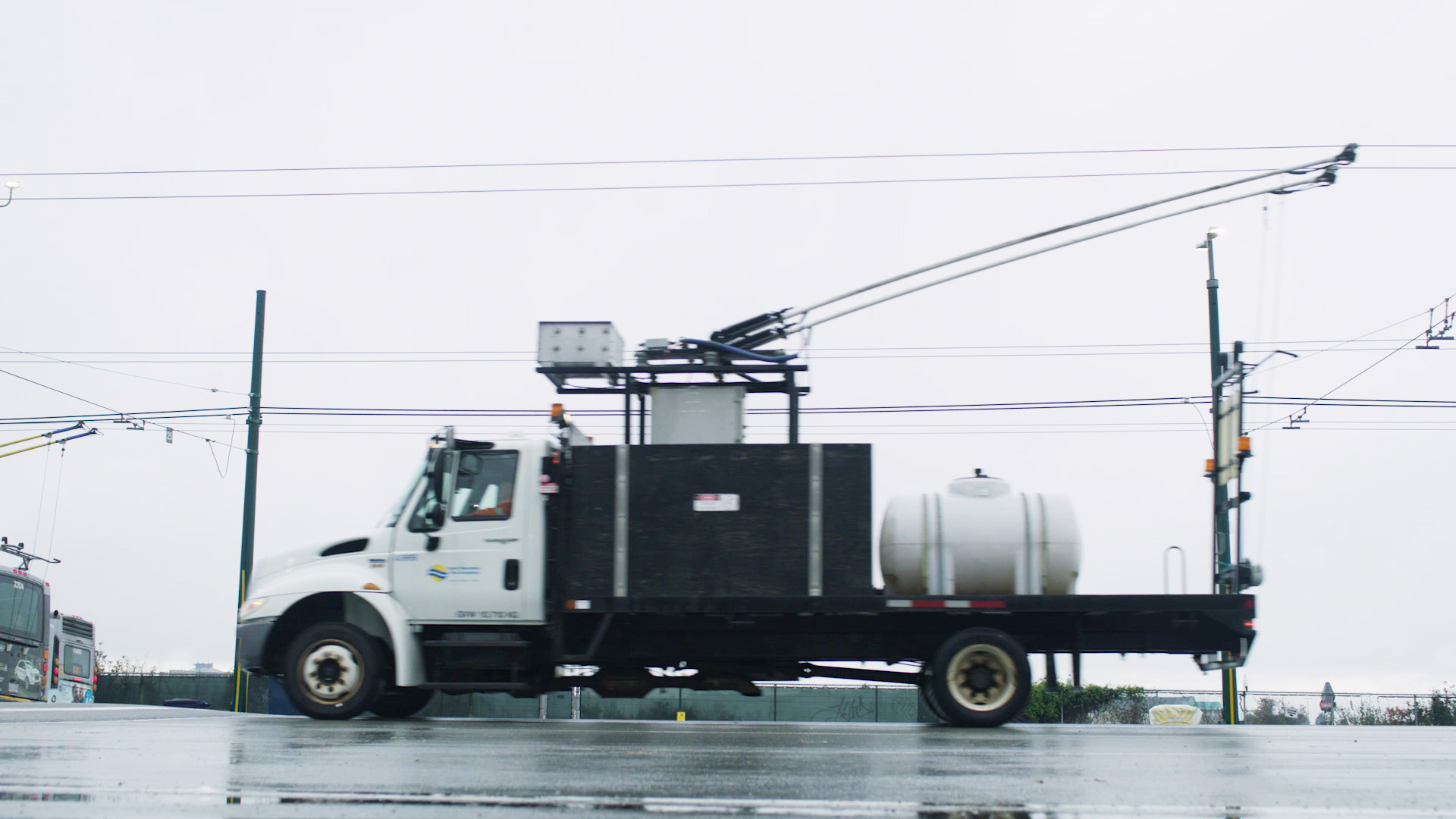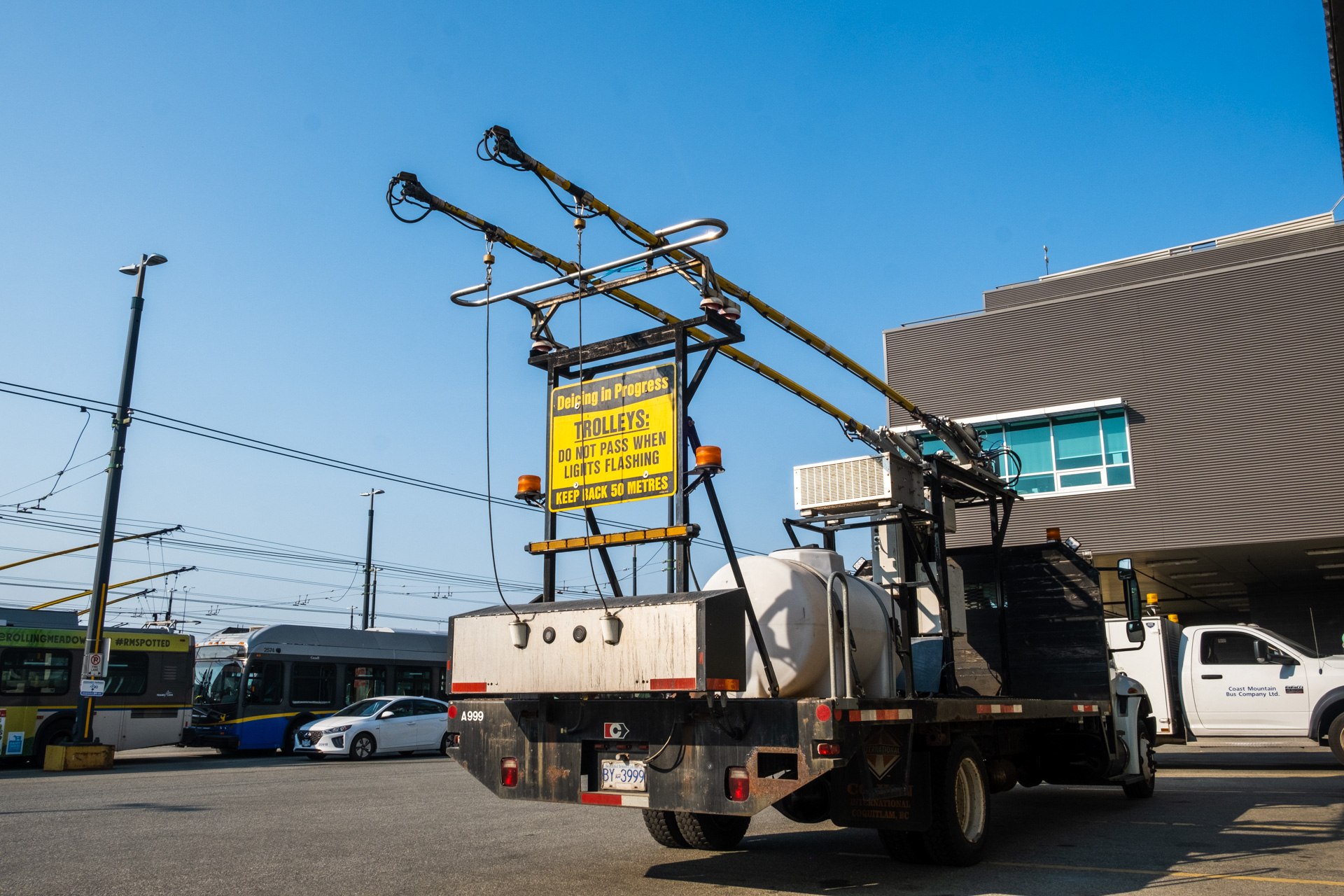This is how we de-ice the overhead wires that power our trolley-electric buses
This is how we de-ice the overhead wires that power our trolley-electric buses

There’s no denying that winter weather wreaks havoc on several transit systems across the world. But with a little ingenuity, we can keep our system operating as smoothly as possible.

As no two transit systems are the same, we’ve developed two creative engineering solutions that are uniquely Metro Vancouver: hockey sticks to clear ice and snow from SkyTrain doors and a one-of-a-kind de-icing truck for the overhead trolley wires.
Our trolley-electric buses rely on two overhead wires to power their movement. But when those wires become coated and wrapped in ice and snow, the buses can no longer draw power. Imagine trying to drive your car with no gas in the fuel tank — that’s essentially what happens when the trolley wires freeze. The trolley wires are the buses “fuel” source.
That’s why it’s imperative we keep those trolley wires ice-free with our de-icing truck!
This purpose-built truck engineered by Coast Mountain Bus Company features a large tank with de-icing fluid. This fluid is pumped into its own trolley poles, which then coats the wires as the truck drives along underneath.
The truck is dispatched overnight when there’s risk of frost or ice building up on the wires. The fluid can last for about three days before we need to reapply.
Prior to developing this truck in 2008, we used a former trolley-electric bus that had been modified it for de-icing operations.
So, next time you’re riding on a trolley bus during the winter and you notice the wires overhead, remember that those wires have been through a rigorous de-icing process to keep your ride smooth and safe.






I guess this means that you no longer send out the first trolleys of the morning out with steel pickup-shoes to scrape the ice from the wires. Back in the Brill days I remember spotting these in operation by the sparks raining down the overhead…